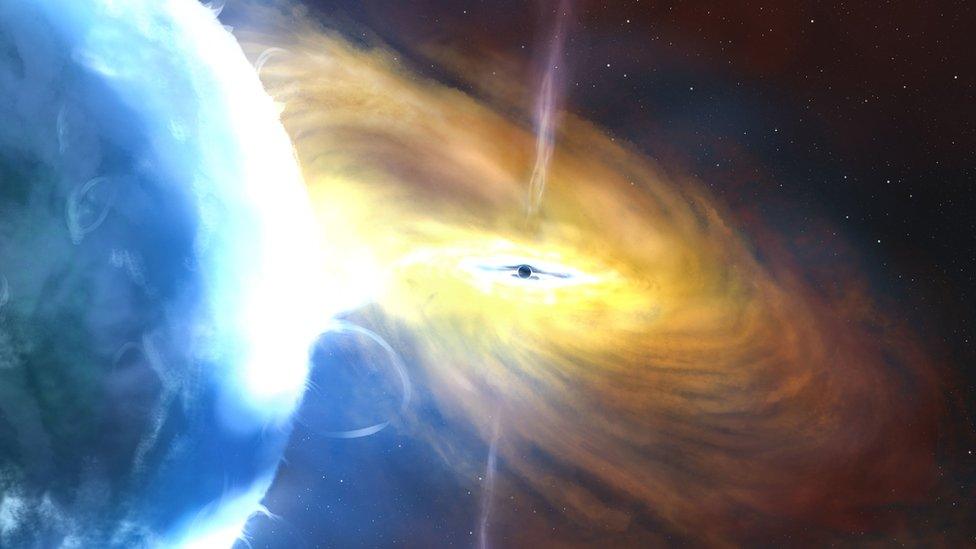Space news: Largest ever space explosion recorded by scientists
- Published
- comments

This is an artist's impression of what the explosion looks like
The largest explosion ever recorded in space has been captured by scientists.
It's thought to have been triggered by a supermassive black hole making a snack of a huge cloud of gas.
The big boom, given the very catchy name 'AT2021lwx', was more than 10 times brighter than any known supernova and three times brighter than the brightest tidal disruption event, where a star falls into a supermassive black hole.
The astronomers who spotted it say it's happening over 8 billion light years away.
"We've estimated it's a fireball 100 times the size of the solar system with a brightness about 2 trillion times of the Sun's," said Dr Philip Wiseman.
Supernova: When a star dies and causes a huge explosion
Black hole: When a very heavy star dies and causes a supernova, it can sometimes collapse inward, causing a black hole - they're like big vacuum cleaners, as the immense gravity at their centre means everything around them gets sucked in, including light
Light year: A measure of distance equivalent to how far light travels in one year
Astronomer: A scientist who studies the universe and the objects within it
Supernova's are what happen when a star dies
Not only is the explosion bright, but it's been going on for quite some time - over three years in fact.
Dr Philip Wiseman, an astronomer at the University of Southampton who led the observations, said that they didn't spot it straight away: "It went unnoticed for a year as it gradually got brighter".
It was first spotted in 2020 by the Zwicky Transient Facility in California.
The first ever photo of a black hole
Dr Wiseman said they came across it by accident, but when they realised how long the explosion had been going on for, they knew they'd stumbled across something very rare.
"In three years, this event has released about 100 times as much energy as the Sun will in its 10bn-year lifetime."
What caused the explosion?
The astronomers believe the explosion is a result of a big cloud of gas, which could be thousands of times larger than our sun.
Black holes often have a doughnut of gas and other debris surrounding it, and they think a chunk of it got knocked off course and straight into the black hole's hungry mouth... although they're not quite sure why.
Black holes pull everything around them inward
They hope that this discovery will lead them to find out more about these events, and how they shape the landscape of space.
Dr Wiseman said: "With new facilities, like the Vera Rubin Observatory's Legacy Survey of Space and Time, coming online in the next few years, we are hoping to discover more events like this and learn more about them.
"It could be that these events, although extremely rare, are so energetic that they are key processes to how the centres of galaxies change over time."
- Published14 October 2020
- Published11 April 2019
- Published7 March 2018
